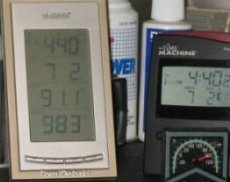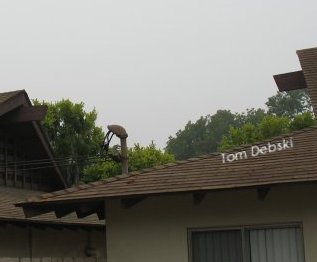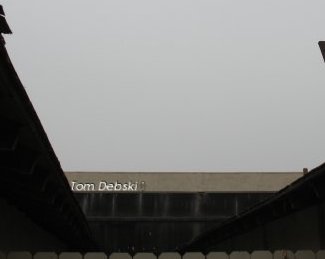Preface
I write and format my blog posts, including html tagging, off-line and paste the results into the Edit Html window. This is what my local template looks like; it is supported by an external stylesheet and the background images that are used in the stylesheet and post. This gives me a real good idea of what the post will look like and allows me to avoid the frustration of the Compose/Preview windows.
The template was made by opening my blog in a browser and saving one post to the desktop. I selected a post with floated pictures so I could capture the code for those. I stripped the saved blog_post.html down by deleting everything that was not needed, like the scripts at the bottom, the navbar, and the profile and link lists from the sidebar. Next I took the remains and retained the doctype and, starting from the <div>s for the post body, I built a pretty clean xhtml document with the items I needed to represent the column and page. I moved the stylesheet to external and linked so there is less code above the work area. I made a couple of adjustments to the stylesheet, for example, the main column background style property needed to moved to the body section and I added the width there as well so width is retained.
I'm sure I could clean it up further, but this works, so I probably won't bother. If you want to see what the template looks like, save it and look at it with a text editor. Every template will be different, but I think the overall layout is similar for new blogger templates.
There are two main advantages to my technique. The first is I can build a post slowly: I don't log on and have to start writing immediately. Second, and maybe most important is the post is on my computer, so, I NEVER sign-in and work on a post in Compose for an hour or two or more, carefully inserting and placing images, and highlighting important passages, only to have some minor glitch, either on Blogger's end, or my end, or somehere in the middle, destroy my work.
The following post is what my template produces and you can compare it to the real thing, as posted.
Tom
 It's been missing lately. No clouds and an offshore air flow makes for very hot days. Combine that with my missing shade trees and the afternoons have been brutal. Look at the later afternoon temps I captured. The bottom is the outside sensor which is in the shade on the cool side of the building. Above it is the inside temp - my AC must be broken.
It's been missing lately. No clouds and an offshore air flow makes for very hot days. Combine that with my missing shade trees and the afternoons have been brutal. Look at the later afternoon temps I captured. The bottom is the outside sensor which is in the shade on the cool side of the building. Above it is the inside temp - my AC must be broken.
 I stepped out and looked to the east. The layer extends well inland.
I stepped out and looked to the east. The layer extends well inland.